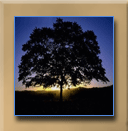Ascariasis and trichuriasis are the scientific names of these infections. Ascariasis is also known commonly as the "large roundworm" infection and trichuriasis as "whip worm" infection.
Infection with whipworm may be in apparent unless noticed when passed in the feces, or, on occasion, crawling up into the throat and trying to exit through the mouth or nose. Infection with numerous worms may result in a pneumonitis during the migratory phase when larvae that have hatched from the ingested eggs in the lumen of the small intestine penetrate into the tissues and by way of the lymph and blood systems reach the lungs. In the lungs, the larvae break out of the pulmonary capillaries into the air sacs, ascend into the throat and descend to the small intestine again where they grow, becoming as large as 31 X 4 cm. Molting occurs at various points along this path and, typically for roundworms, the male and female adults in the intestine are 5th-stage nematodes. Vague digestive tract discomfort sometimes accompanies the intestinal infection, but in small children with more than a few worms there may be intestinal blockage because of the worms' large size. Not all larval or adult worms stay on the path that is optimal for their development; those that wander may locate in diverse sites throughout the body and cause complications. The larvae of ascarid species that mature in hosts other than humans may hatch in the human intestine and are especially prone to wander; they may penetrate into tissues and locate in various organ systems of the human body, perhaps eliciting a fever and diverse complications.
Life Cycle Diagram (Courtesy of the DPD)

The unembryonated eggs are passed with the stool  . In the soil,
the eggs develop into a 2-cell stage
. In the soil,
the eggs develop into a 2-cell stage  , an advanced cleavage stage
, an advanced cleavage stage  ,
and then they embryonate
,
and then they embryonate  ; eggs become infective in 15 to 30 days. After ingestion (soil-contaminated hands or food),
the eggs hatch in the small intestine, and release larvae
; eggs become infective in 15 to 30 days. After ingestion (soil-contaminated hands or food),
the eggs hatch in the small intestine, and release larvae  that mature and establish themselves as adults in the colon
that mature and establish themselves as adults in the colon
 . The adult worms (approximately 4 cm in length) live in the cecum and ascending colon. The adult worms
are fixed in that location, with the anterior portions threaded into the mucosa. The females begin to oviposit 60 to 70 days after infection.
Female worms in the cecum shed between 3,000 and 20,000 eggs per day. The life span of the adults is about 1 year.
. The adult worms (approximately 4 cm in length) live in the cecum and ascending colon. The adult worms
are fixed in that location, with the anterior portions threaded into the mucosa. The females begin to oviposit 60 to 70 days after infection.
Female worms in the cecum shed between 3,000 and 20,000 eggs per day. The life span of the adults is about 1 year.













